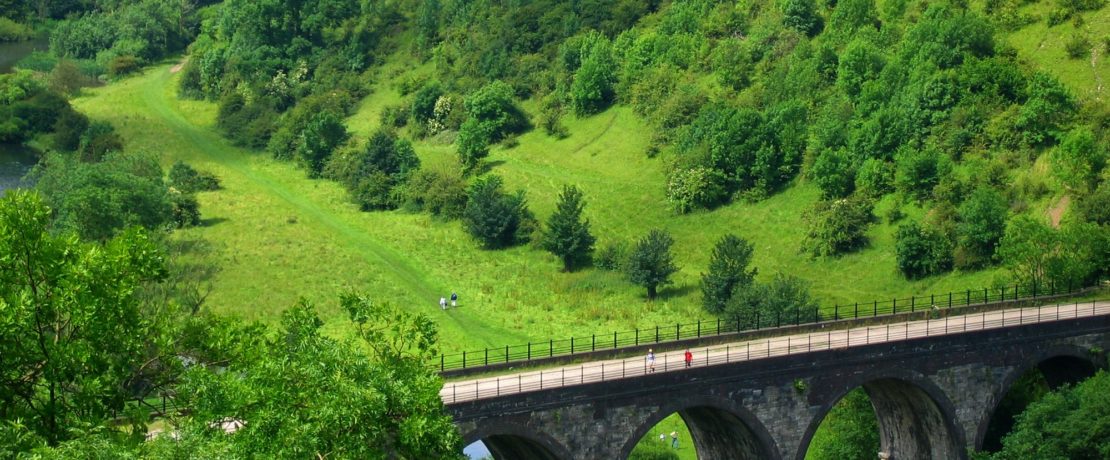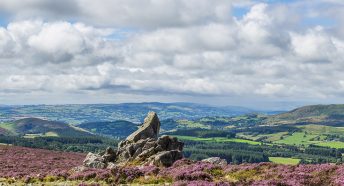Take the high road: five elevated routes for walking and cycling
Many of England’s historic viaducts and aqueducts have found a new lease of life as walking and cycling routes. Here, writer Jack Thurston selects five of his favourites.
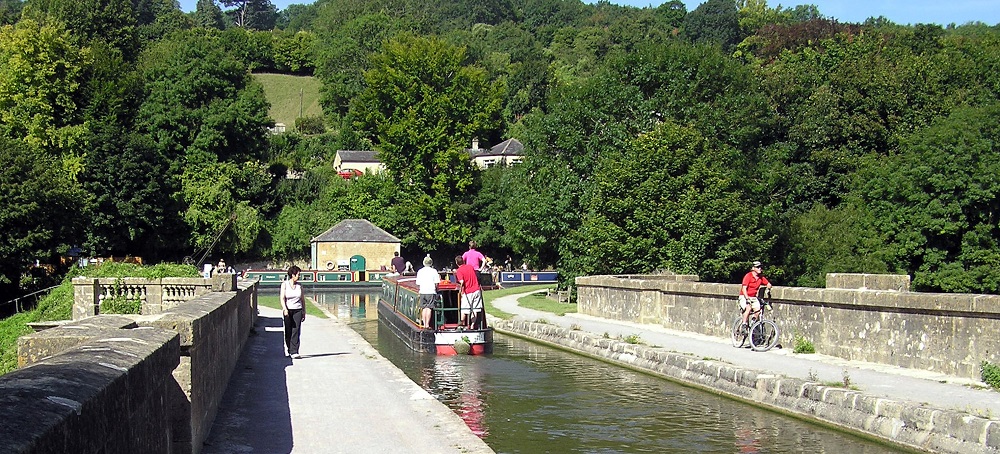
Dundas Aqueduct
Somerset/Wiltshire
Far more ornate than it needed to be for purely functional purposes, John Rennie’s Dundas Aqueduct takes the Kennet and Avon Canal across the River Avon, on the beautiful stretch between Bath and Bradford-on-Avon. The grand neoclassical design, realised in Bath stone, reflects the supreme confidence at the height of Britain’s canal age.
Adjoining the aqueduct is Brassknocker Basin, used for boat moorings, cycle hire and a café, and the canal itself has a cheerful vibe, with dozens of full-time canal boaters living happy, car-free outdoor lives. If cycling out from Bath, the Two Tunnels Greenway offers an interesting alternative route back via Tucking Mill.
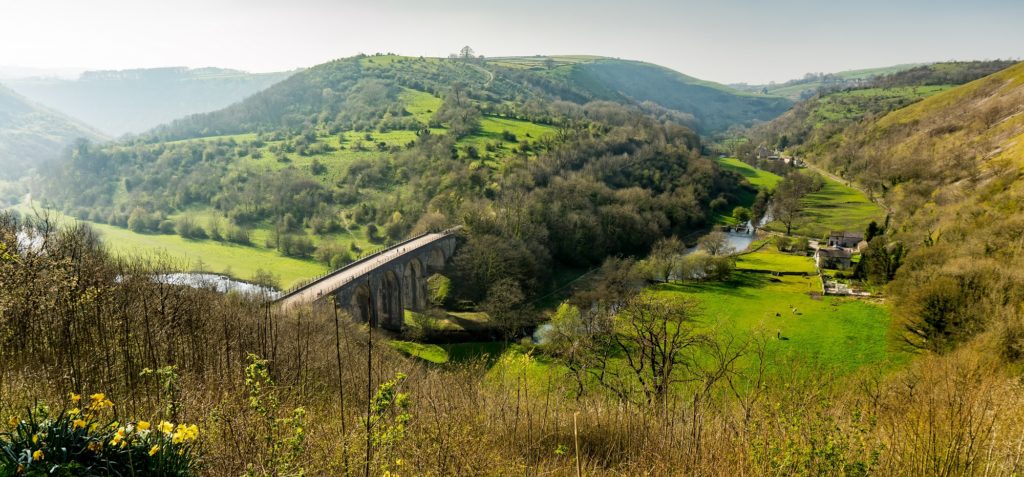
Headstone Viaduct
Derbyshire
Set among the verdant limestone crags of Monsal Dale in the Peak District, the Headstone Viaduct has serious wow factor. Once part of the Bakewell to Buxton railway, the Monsal Trail is among the most popular rail-to-trail routes in England.
The best view is from Monsal Head and this can be worked into a short but spectacular walk down into the steep and wooded slopes, over a footbridge and back through the meadows beside the gin-clear waters of the River Wye. If cycling, then the 8.5-mile trail makes for a leisurely out-and-back route that’s perfect for children and new cyclists, or part of a longer loop taking in local lanes.
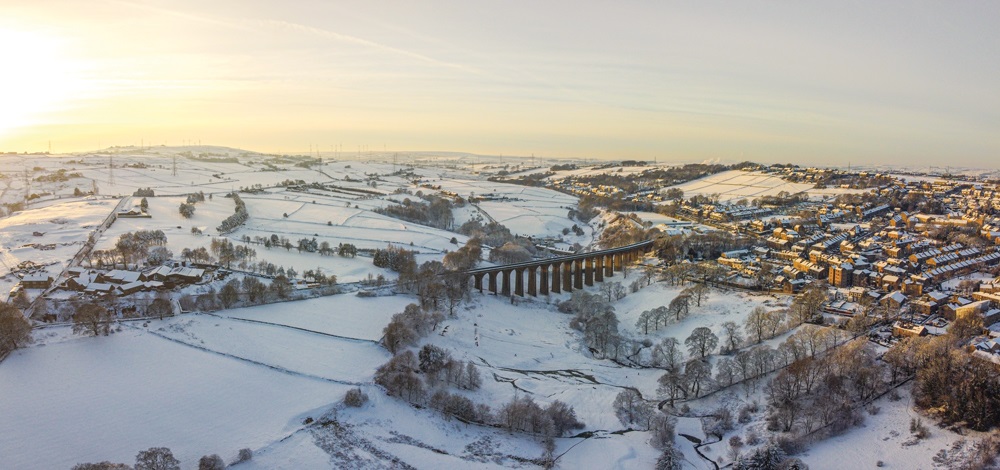
Thornton Viaduct
West Yorkshire
The elegant S-shaped curve of the Thornton Viaduct is the highlight of the Great Northern Railway Trail, a six-mile walking and cycling route on the edge of the South Pennines just west of Bradford. The railway was once known as the Alpine Line, on account of the hilly terrain and the number of viaducts and tunnels.
The trail itself is still a work in progress, with some on-road sections for cyclists and footpath diversions for walkers. A long-held dream of many is to reopen the 1.4-mile Queensbury Tunnel and extend the trail into a new greenway between Bradford and Halifax. As things stand, Highways England, which owns the tunnel, has applied to have it infilled with concrete. However, the Queensbury Tunnel Society has been fighting to save the tunnel from abandonment until funding can be found to reopen it.
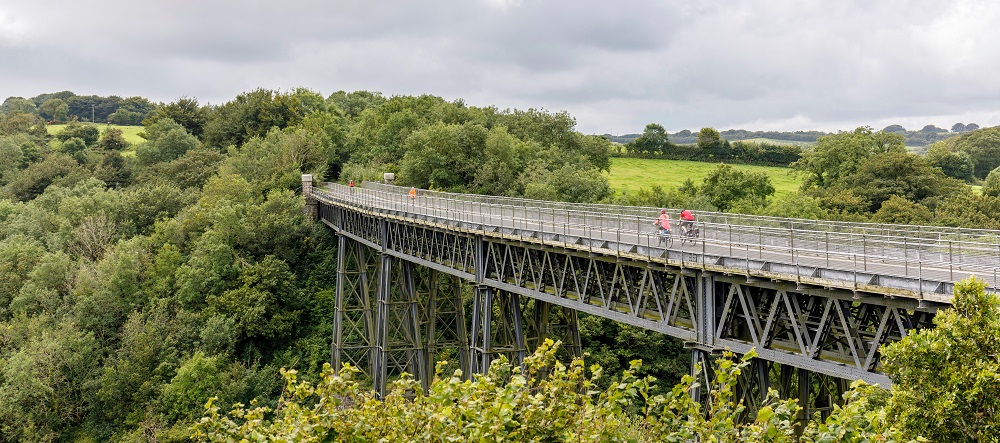
Meldon Viaduct
Devon
The gently curving Meldon Viaduct soars 46 metres above the West Okement River. Intricately constructed from wrought and cast iron, it has the look of a teetering fairground ride. Yet it once carried trains between Exeter and Plymouth, on a rival line to Brunel’s route along the south coast.
Today it is part of the 12-mile Granite Way, a traffic-free cycling and walking route between Okehampton and Dartmoor’s medieval capital of Lydford. Another three miles on, the route crosses the Lake Viaduct, another glorious span that, being made from dense Dartmoor granite, feels altogether more solid.
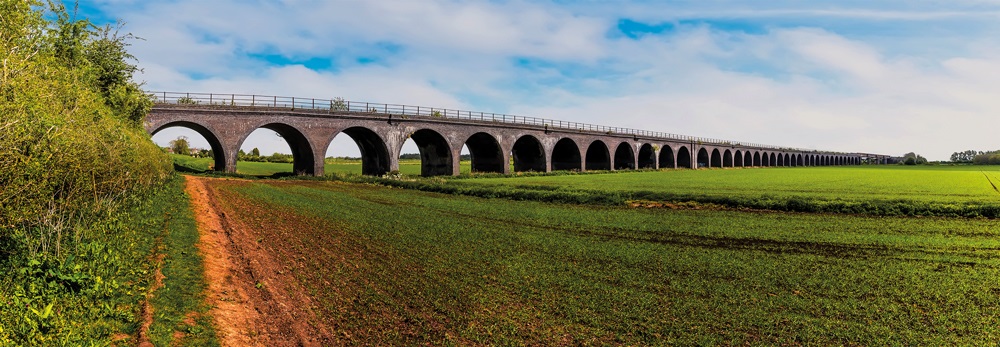
Fledborough Viaduct
Nottinghamshire/Lincolnshire
Downstream of Nottingham, bridges across the River Trent are few and far between. Fledborough’s 59 stone arches on either side of steel girders that span the river were originally built for the railway between Chesterfield and Lincoln. They once carried Midlanders to the seaside at Cleethorpes and Mablethorpe, and fragrant high-speed ‘fish trains’ loaded with the catch of the day from Grimsby.
For cyclists, the viaduct is on a long-distance Sustrans route between Clumber Park and Lincoln (and onwards to Boston on the largely traffic-free Water Rail Way). For walkers, a walk across the viaduct forms part of a seven-mile circular route incorporating both sides of the river, Dunham Bridge and the medieval church at the village of Fledborough.
Jack Thurston is the author of the Lost Lanes series of guidebooks to cycling in England and Wales.
This article was originally published in CPRE’s award-winning magazine, Countryside Voices. You’ll have Countryside Voices sent to your door three times a year, as well as access to other benefits including discounts on attraction visits and countryside kit from major high street stores when you join as a CPRE member. Join us now.
